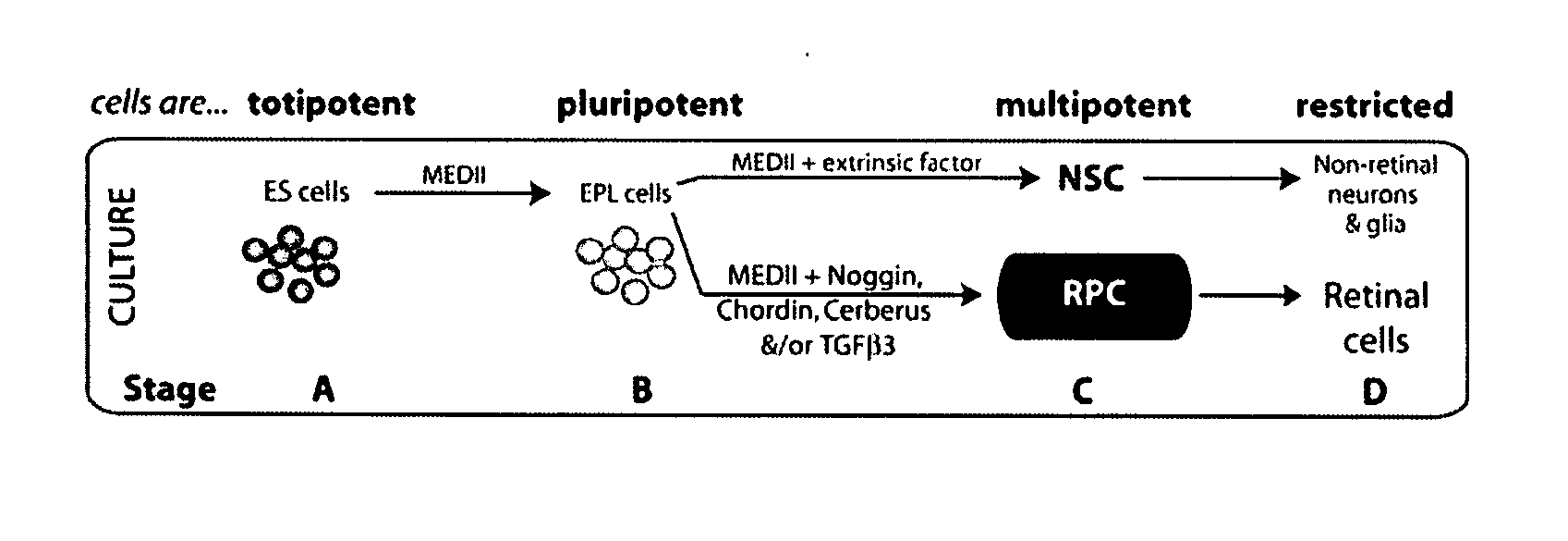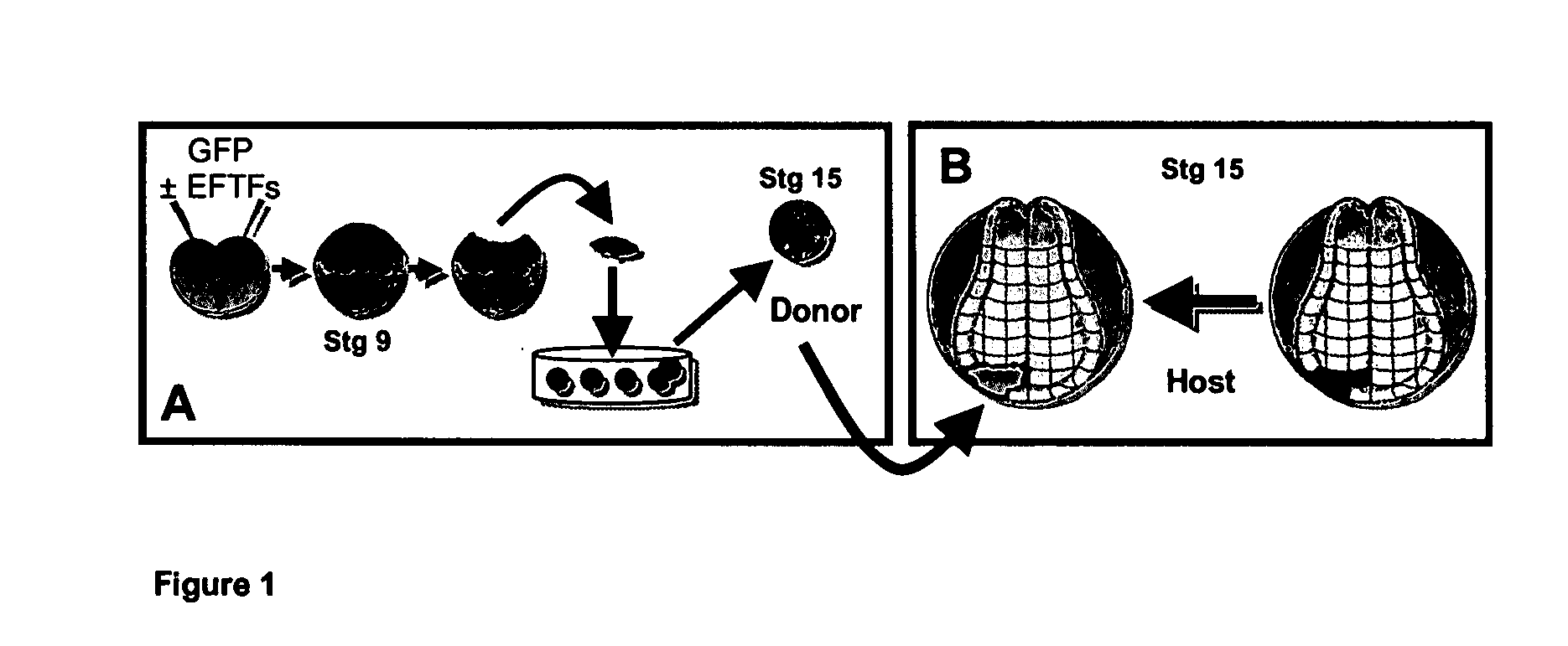Retinal stem cell compositions and methods for preparing and using same
a technology of stem cells and compositions, applied in the field of retinal stem cell compositions, can solve the problems of slow disease progression, inability to replace lost retinal cells, and physical damage to retinal cells,
- Summary
- Abstract
- Description
- Claims
- Application Information
AI Technical Summary
Benefits of technology
Problems solved by technology
Method used
Image
Examples
example 1
EFTFs Reprogram Primitive Ectoderm to Eyes
[0078] Seven eye field transcription factors (EFTFs) that are expressed in the retinal stem / progenitor cells of the early eye primordia are sufficient to induce the formation of ectopic eyes. An Animal Cap Transplant (ACT) assay makes it possible to detect the formation of retinal stem / progenitor cells. This method makes it possible to determine if non-retinal cells have been reprogrammed to retinal stem / progenitor cells based on their unique ability to generate retinal tissue when transplanted to the developing Xenopus embryo. The ACT assay is schematized in FIG. 1 and a description is detailed in Methods. This assay takes advantage of two strengths of the Xenopus system—the ectodermal explant assay and tissue transplantation assays. Both blastomeres of two-cell stage Xenopus embryos were injected with either EFTF RNA cocktail containing GFP RNA as a tracer or GFP RNA alone. Ectodermal explants (animal caps) are collected from injected emb...
example 2
EFTF-Induced Eyes are Morphologically and Molecularly Identical to Normal Eyes
[0080] To better characterize the internal morphology and identify cell types present in EFTF-induced eyes, embryos with strongly fluorescent EFTF-induced eyes were fixed, cryostat sectioned and in situ hybridization or immunocytochemistry were used to identify retinal cell types. Induced eyes had internal morphology identical to normal eyes, containing the tri-layered structure of a normal retina and all the cell types that could be identified by morphology and available molecular markers. These including a lens, retinal pigment epithelium (RPE), rod and cone photoreceptors, and retinal ganglion cells (FIG. 2I-J). Retinal ganglion cell (RGC) axons, the only neural processes that leave the retina, exit the back of the eye as the optic nerve. When viewed using high contrast microscopy, axon tracts were observed exiting the back of induced eyes (opposite the lens), reminiscent of the path taken by RGC axons...
example 3
EFTF-Induced Eyes are Functionally Normal
[0082] In vertebrate eyes, the cornea and lens focus light reflected from images in the surrounding world onto the retina, which lines the back of the eyeball. Cells in the retina form complex circuits designed to convert light into electrical impulses that pass via RGC axons to the brain. An electroretinogram (ERG) can 1) detect additional retinal cell types not identifiable using molecular markers, 2) determine if the induced cells were functionally normal and 3) determine if they formed the intricate neural network necessary to detect and process a light stimulus. EFTF-induced eyes generated ERGs typical of normal eyes (FIGS. 2H& L). In the outer retinal layer, rod and cone photoreceptors use phototransduction to convert light into an electrical impulse. In the normal retina, photoreceptor initiated impulses pass through the inner nuclear layer via second order cell types. In induced eyes, brief light flashes with intensities as low as 0....
PUM
 Login to View More
Login to View More Abstract
Description
Claims
Application Information
 Login to View More
Login to View More - R&D
- Intellectual Property
- Life Sciences
- Materials
- Tech Scout
- Unparalleled Data Quality
- Higher Quality Content
- 60% Fewer Hallucinations
Browse by: Latest US Patents, China's latest patents, Technical Efficacy Thesaurus, Application Domain, Technology Topic, Popular Technical Reports.
© 2025 PatSnap. All rights reserved.Legal|Privacy policy|Modern Slavery Act Transparency Statement|Sitemap|About US| Contact US: help@patsnap.com



